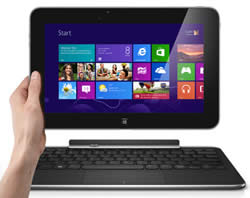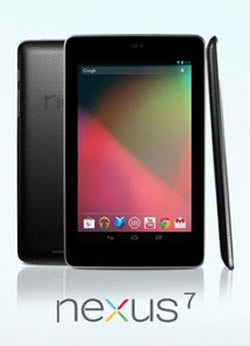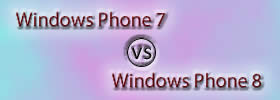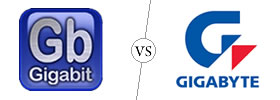Difference between Dell XPS 10 and Nexus 7
Key Difference: The Dell XPS 10 is a 10.1-inch tablet that comes with a keyboard Dock to make it into a laptop. The screen is an HD Display capacitive multi-touch screen, with 1366 x 768 pixels and an approximately 155 ppi pixel density. The Nexus 7 is a tablet computer running Android 4.1 (also named Jelly Bean) operating system. It was developed in collaboration with Asus.
Dell is a popular company that is well-known for its customizable computers. It allowed people to build laptops and desktops from scratch, adding only components they need and paying only for those components. It has become a popular name in laptops, but has yet to launch itself in the tablet market. In response to the growing market for tablets the company has launched Dell Streak, which did not manage to garner much positive response for the company. Dell announced in August that is launching its newest table the Dell XPS 10 in October 2012.
 The Dell XPS 10 is a 10.1-inch tablet that comes with a keyboard Dock to make it into a laptop. The tablet serves the purpose of fulfilling the need for the tablet on the go and a laptop for some serious professional work. The company has launched the tablet on the Windows RT OS, which have not been able to draw in many customers. According to every review website, the company has not been doing that well in sales of tablets due to the Windows OS. However, the design of this tablet and its features should bring in loyal Dell fans to the product. The screen is an HD Display capacitive multi-touch screen, with 1366 x 768 pixels and an approximately 155 ppi pixel density, which is not the best resolution available on the tablets, but it wasn’t that bad when viewing the tablet. The sleek tablet has a metal chassis and has a rubber back for better gripping. The tablet itself is quite sleek and lightweight making it easier to carry. The screen is small though because of the black bezel on the screen. The screen is made using Asahi Dragontrail high strength glass for durability.
The Dell XPS 10 is a 10.1-inch tablet that comes with a keyboard Dock to make it into a laptop. The tablet serves the purpose of fulfilling the need for the tablet on the go and a laptop for some serious professional work. The company has launched the tablet on the Windows RT OS, which have not been able to draw in many customers. According to every review website, the company has not been doing that well in sales of tablets due to the Windows OS. However, the design of this tablet and its features should bring in loyal Dell fans to the product. The screen is an HD Display capacitive multi-touch screen, with 1366 x 768 pixels and an approximately 155 ppi pixel density, which is not the best resolution available on the tablets, but it wasn’t that bad when viewing the tablet. The sleek tablet has a metal chassis and has a rubber back for better gripping. The tablet itself is quite sleek and lightweight making it easier to carry. The screen is small though because of the black bezel on the screen. The screen is made using Asahi Dragontrail high strength glass for durability.
The device has a SIM card slot for optional 2G, 3G and 4G capability, if required. The tablet comes with 32/64 GB Flash Storage and also has a microSD slot that allows users to upgrade the internal storage capacity by 64 GB. The system is powered by a 1.5GHz Dual-core processor and has a Qualcomm Snapdragon S4 GPU. The device provides a 2GB RAM, which allows serious multi-tasking capabilities. The tablet provides Bluetooth, Wi-Fi and USB capability. The dock (keyboard), when attached provides two extra USB 2.0 slots on either side. The keyboard is also sleek and thin with dedicated Windows soft keys and trackpad. Both the tablet and the keyboard have a charging port. This is because when docked, the charging port on the bottom of the device gets covered by the keyboard and the user can still charge using the secondary port. The tablet has a 5MP rear camera with autofocus ability, but it lacks a flash. This results in distorted images in dark lighting. The camera also has weak video performance and the sharpness must be constantly updated during recording. The device also houses a 2MP secondary camera that is decent for snapshots and video conferencing.
The device houses a non-removable 28Wh 2-cell lithium-ion battery that provides 10 hours, 30 minutes of multimedia time, while the dock has an additional 27 Wh battery that extends battery life to 18 hours, 18 minutes. The device also fared decently during gaming tests. All of the devices are available Office Home & Student 2013 RT that can be changed and customized on the company’s website before shipping. The Windows OS only allows downloading apps from the Windows Stores, which does not have that many choices in apps. The tablet has been designed to be used as a personal tablet as well as a professional laptop, eliminating the need for spending on both.
 Among the number of various companies launching phones based on Google’s Android, Google has also launched its own line of smartphones based on Android, called the Google Nexus. Each device in the Nexus line is produced via collaboration between Google and a leading original equipment manufacturer (OEM) partner. The Nexus devices in general have an advantage over other devices in that the Android in the Nexus devices is pure. I.e. the Android does not have any manufacturer or wireless carrier modifications to it, such as a custom graphical user interface. The Android also has an unlockable bootloader to allow further development and end-user modification, all of which is usually blocked on other Android smartphones.
Among the number of various companies launching phones based on Google’s Android, Google has also launched its own line of smartphones based on Android, called the Google Nexus. Each device in the Nexus line is produced via collaboration between Google and a leading original equipment manufacturer (OEM) partner. The Nexus devices in general have an advantage over other devices in that the Android in the Nexus devices is pure. I.e. the Android does not have any manufacturer or wireless carrier modifications to it, such as a custom graphical user interface. The Android also has an unlockable bootloader to allow further development and end-user modification, all of which is usually blocked on other Android smartphones.
The Nexus 7 is a 7-inch tablet computer running Android 4.1 (named Jelly Bean) operating system. It was developed in collaboration with Asus. It was the first tablet in the Google Nexus series and features a 7-inch (180 mm) display, an Nvidia Tegra 3 quad-core chip, 1 GB of RAM, and 8, 16 or 32 GB of internal storage. The 8 and 16 GB models were Wi-Fi only, and the 8 GB was eventually discontinued. The 32 GB models are both Wi-Fi and 3G compatible. The Nexus 7 was marketed effectively as an entertainment device. The tablet has been designed with gaming purpose in mind and has received high resolution display and various sensors to make it the ultimate gaming tablet. The tablets has dropped the rear primary cameras in the tablet and instead focus on place a 1-2 MP front-facing camera for video chatting purposes. The company has also eliminated the Camera app, so users will have to download an app from third-party developers from Google Play. According to Techradar, the images from the camera were a little grainy, but video calling was seamless, with no lag during calls. The low price of the Nexus 7 makes it a good and cheap companion. The 32 GB is available for USD 199 from the website.
The information for the detailed table about the two phones has been taken from the Dell website, trustedreviews.com, notebookcheck.net, Google website and GSMArena.com.
|
|
Dell XPS 10 Tablet |
Nexus 7 |
|
Launch Date |
October 2012 |
June 2012 |
|
Company |
Dell |
Google; designed in collaboration with and manufactured by Asus. |
|
Size |
Tab: 9.2 x 274.7 x 177.3mm Tab + Dock: 23.91 (hinge end) x 274.7 x 177.3mm |
198.5 x 120 x 10.5 mm (7.81 x 4.72 x 0.41 in) |
|
Display |
10.1" HD Display capacitive multi-touch screen |
7.0 inches LED-backlit IPS LCD capacitive touchscreen, 16M colors |
|
Screen |
1366x768 pixels (~155 ppi pixel density) |
800 x 1280 pixels, (~216 ppi pixel density) |
|
Protection |
Edge-to-edge Asahi Dragontrail high strength glass |
Corning Glass |
|
Weight |
Tab: Wi-Fi: 635 grams Tab: LTE: 645 grams Tab + Dock: 1310 grams |
340g (11.99 oz) |
|
2G Network |
GSM 850 / 900 / 1800 / 1900 (optional) |
GSM : 850/900/1800/1900 |
|
3G Network |
HSDPA (optional) |
WCDMA : 850/900/2100 |
|
4G Network |
LTE (optional) |
N/A |
|
GUI |
Windows |
Pure Android |
|
CPU speed |
1.5GHz Dual-Core processor |
Quad-core 1.2 GHz Cortex-A9 |
|
GPU |
Adreno 225 |
ULP GeForce |
|
OS |
Windows RT |
Android OS, v4.1 (Jelly Bean), upgradable to v4.2.1 (Jelly Bean) |
|
Chipset |
Qualcomm® Snapdragon S4 |
Nvidia Tegra 3 |
|
RAM |
2 GB |
1 GB RAM |
|
SIM Size |
micro-SIM |
Micro-SIM for 3G model |
|
Internal Memory |
32/64 GB Flash Storage |
16/32 GB storage |
|
Expandable Memory |
Up to 64 GB |
None |
|
Sensors |
Accel, gyro, compass, AGPS (with LTE configurations), ALS, sensor fusion |
G-Sensor, Light Sensor, Gyroscope, E-compass, GPS, NFC, Hall Sensor |
|
Connectivity |
USB, HDMI, Bluetooth (optional 2G, 3G and 4G network) |
Wi-Fi 802.11 b/g/n Bluetooth NFC (Android Beam) 32GB + Mobile data version only: Unlocked GSM/UMTS/HSPA+ 32GB + Mobile data version only: GSM/EDGE/GPRS (850, 900, 1800, 1900 MHz) 32GB + Mobile data version only: 3G (850, 900, 1700, 1900, 2100 MHz) 32GB + Mobile data version only: HSPA+ 21 Mbps |
|
Data |
USB, HDMI, Bluetooth, Wi-Fi, with optional mobile connectivity. |
WiFi, NFC, USB GPRS, EDGE for 32GB + Mobile data version only |
|
Speed |
1510.0 MHz HSPA+/LTE (optional) |
HSPA+ 21 Mbps |
|
WLAN |
Dual-band Wi-Fi (802.11a/b/g/n) |
Wi-Fi 802.11 b/g/n |
|
Bluetooth |
Bluetooth v4.0 |
Bluetooth V3.0 |
|
USB |
Micro-USB |
Micro-USB |
|
Primary Camera |
5MP rear camera |
1.2 MP |
|
Secondary Camera |
2MP front camera |
None |
|
Video |
720p@30fps |
720p |
|
Camera Features |
Autofocus |
Video-calling |
|
Sound Enhancement |
None |
None |
|
Audio supported formats |
MP3/WAV/eAAC+ player |
MP3/WAV/eAAC+/WMA player |
|
Video supported formats |
MP4/H.264/H.263 player |
MP4/H.264 player |
|
Battery Capacity |
Tab: Non-removable 28Wh 2-Cell Lithium Ion battery |
Non-removable Li-Ion 4325 mAh battery |
|
Talktime |
- |
- |
|
Standby Time |
Tab: 10 hours, 30 minutes Dock: 18 hours, 18 minutes |
- |
|
Available Colors |
Black/Steel |
Black |
|
Messaging |
Email, Push Email, IM |
Email, Push Email, IM, RSS |
|
Browser |
HTML5 |
HTML5 |
|
Radio |
No |
No |
|
GPS |
GPS with A-GPS support (with LTE/HSPA+ configs) |
Yes |
|
Java |
No |
None |
|
Additional Features |
|
|
Image Courtesy: dell.com, androidheadlines.com









Add new comment